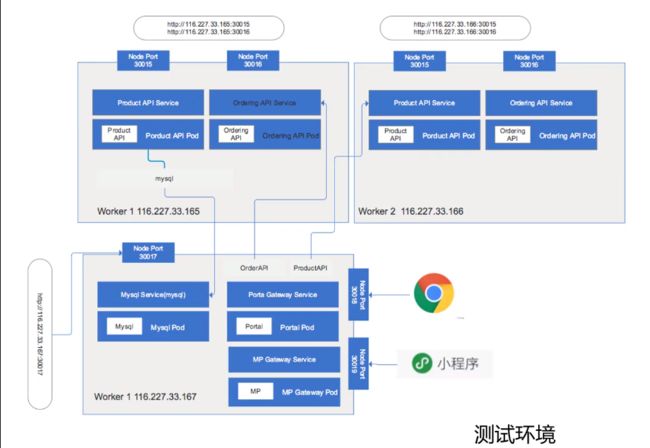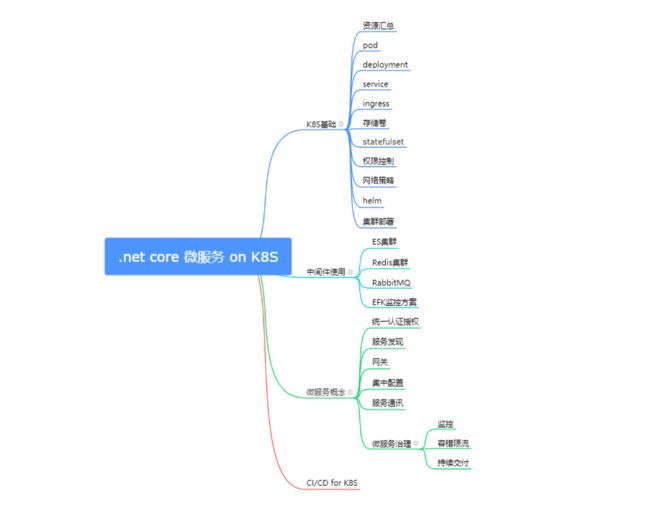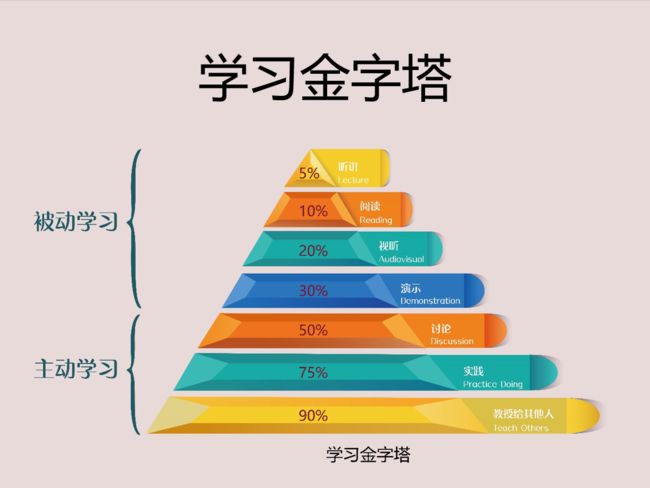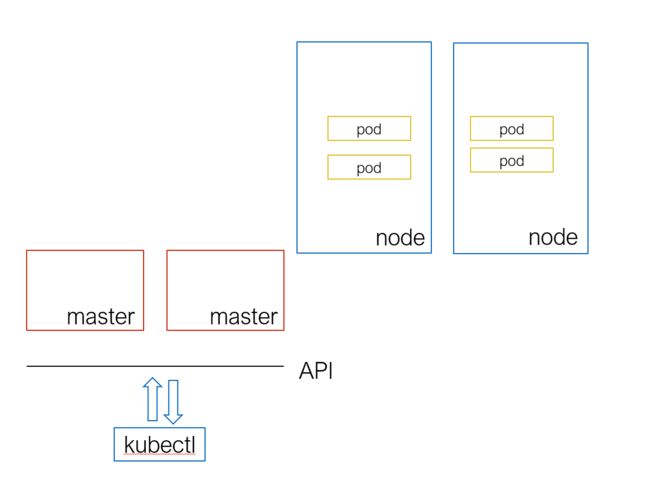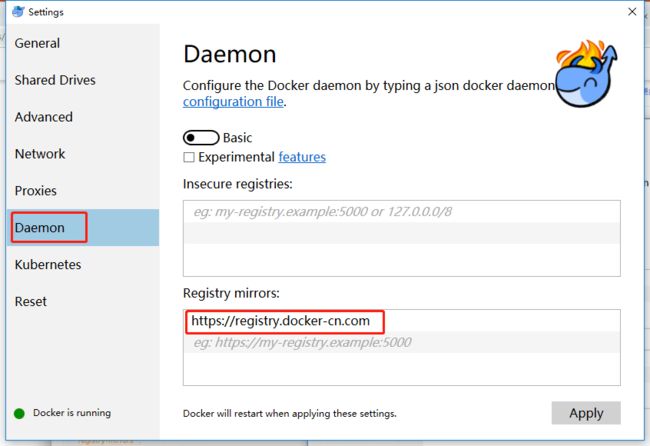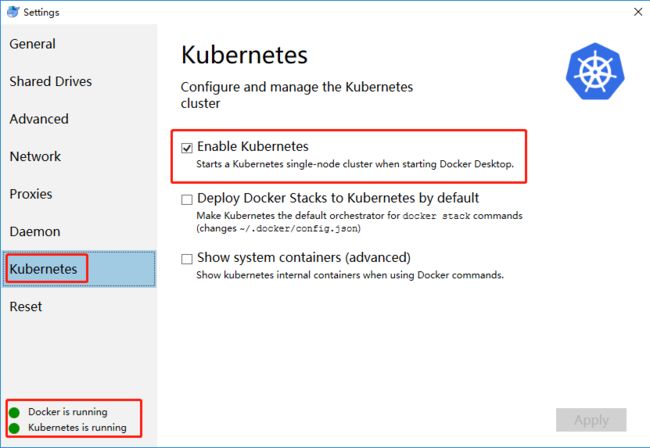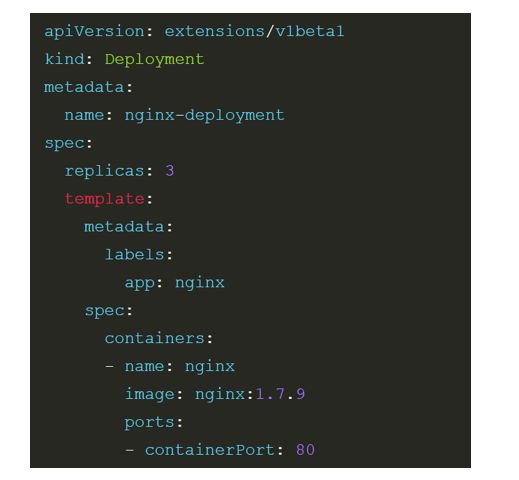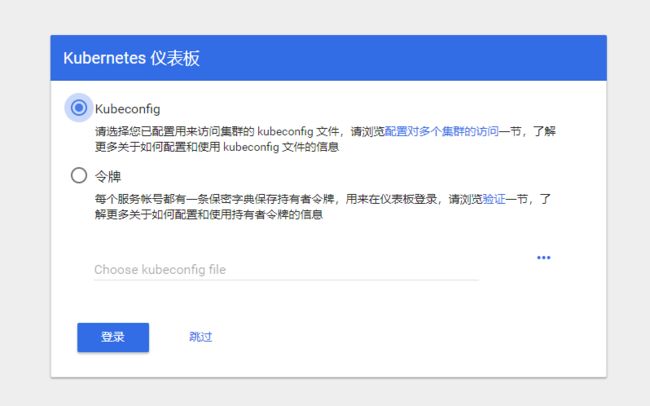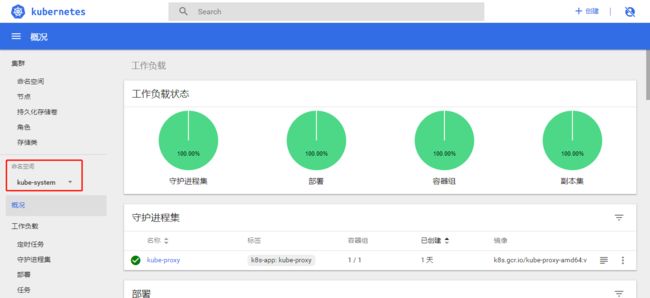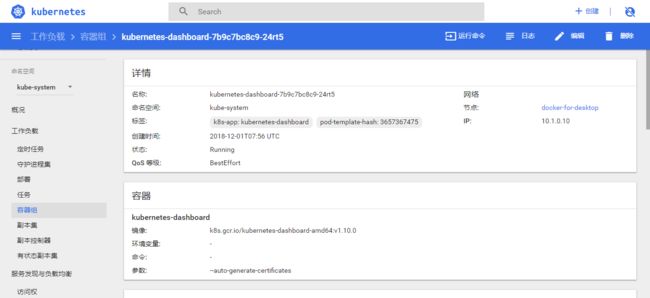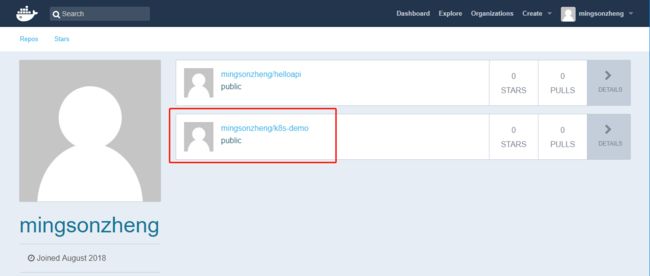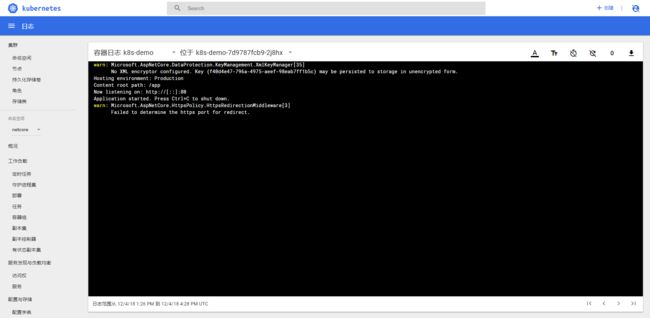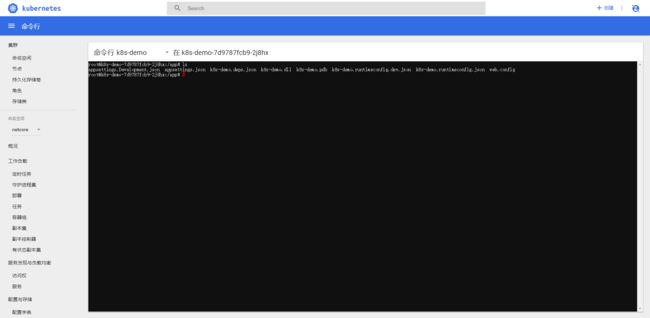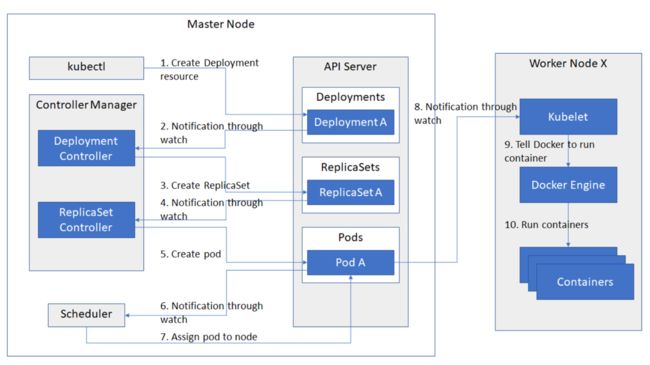课程链接:http://video.jessetalk.cn/course/explore
良心课程,大家一起来学习哈!
目录
- 01-介绍K8s是什么
- 02-为什么要学习k8s
- 03-如何学习k8s
- 04-K8S集群基本概念
- 05-安装本地k8s单节点集群
- 06-K8S三大核心组件介绍
- 07-Service的三种类型及Dashboad部署
- 08-kubectl工具命令介绍
- 09-yaml部署文件格式介绍
- 10-部署netcore api到K8S
- 11-k8s高可用集群介绍
- 12-进阶介绍
01-介绍K8s是什么
Docker VS VirtualMachine
- 敏捷地应用创建和部署
- 持续开发,集成和部署
- 开发和运行相分离
- 开发,测试和生产环境的持续
- 云和操作系统版本的可移植性,可以运行在 Ubuntu, RHEL, CoreOS, on-prem, Google Container Engine,和任何其它的运行环境中。
- 松耦合,分布式,弹性,自由的微服务
- 资源隔离:可以预测的应用性能
- 资源使用:高效
Docker 容器集群
镜像 => run => 容器(运行时)
- 同一个容器在同一台Host上能部署几份?
- 如果实现在多台机器上快速部署?
- 不同容器在不同机器上如何交互?如何做负载均衡?
K8S 介绍
一个用于容器集群的自动化部署、扩容以及运维的开源平台
- 快速而有预期地部署你的应用
- 极速地扩展你的应用
- 无缝对接新的应用功能
- 节省资源,优化硬件资源的使用
02-为什么要学习k8s
通过 K8S 降低整个基础设施在架构和运维上的难度
测试环境
- 将多个API打成镜像部署到不同的节点上
- 通过 Node Port 本地可以直接连到 API 进行测试
- Mysql 与 API 可以通过 service 连接
- 一套脚本部署
生产环境
- Mysql, Redis, 消息队列使用第三方服务(腾讯云)
- 也可以通过 桥接 将内部 API 与外部服务连接
03-如何学习k8s
掌握学习的方法(刻意练习)
- 先了解全貌和整体
- 对整体结构进入拆分、梳理脉络(思维导图)
- 马上开始行动(比如本地部署一个集群)
- 在动的过程中逐步加深,每一个阶段有阶段性目标
- 及时进行回顾与复盘,与理论相结合
- 输出(学习金字塔)
学习K8S的路径
- 了解基本概念及核心组件
- 使用本地单节点集群来学习k8s
- 用kubectl 与本地集群建立连接
- 部署服务到 k8s集群
- 对k8s服务进行扩容、更新
- 进一步学习k8s资源(pod, deployment, service, statefulset, ingress…)
- 设计微服务
- 搭建k8s集群或者使用云服务商的k8s服务
- 添加持续集成、日志搜集、监控和指标度量、跟踪
04-K8S集群基本概念
Agenda
- K8S集群基本概念
- 本地搭建k8s单节点集群
- POD & Service & Deployment
- Service 的三种类型
- Yaml 部署文件语法初体验
- 初始化一个.NET Core API 并push到docker hub
- 把.Net Core API 部署到 K8s
- K8S集群高级概念
K8S集群基本概念
- 集群(多个机器拼在一起,共同处理)
- Node (Master:维护集群状态 and Worker:处理)(高可用时架构不同)
- 资源(内部组件为一个资源,对外暴露 restful 的 WebApi)(例如 Yaml)
- Kubectl (本地客户端,一个命令行工具,连接到 K8S 集群)
05-安装本地k8s单节点集群
安装教程
Docker社区版中Kubernetes开发
输入国内镜像地址(https://registry.docker-cn.com),才能更好的拿到谷歌开头的镜像
运行下列脚本可以从阿里云镜像服务下载Kubernetes安装所需Docker镜像,您也可以通过修改 images.properties 文件定义自己安装所需的Docker镜像
右键 git bash
git clone https://github.com/AliyunContainerService/k8s-for-docker-desktop
cd k8s-for-docker-desktop如果您安装版本为18.09/18.06版本可以直接使用master分支;如果是18.03稳定版请使用对应的代码分支 git checkout 18.03
Windows下加载镜像(./load_images.sh)可能会报错
使用 PowerShell 执行 load_images.ps1 循环拉取 images.properties 的镜像
需要开启VPN
在Docker for Mac中开启 Kubernetes
勾选 Enable Kubernetes 安装,等待消息 Kubernetes is running
配置信息路径:C:\Users\MINGSON.kube
测试 kubectl 命令,在左下角 Windows 图标右键启动 Window PowerShell(管理员)
PS C:\WINDOWS\system32> kubectl get nodes
NAME STATUS ROLES AGE VERSION
docker-for-desktop Ready master 1d v1.10.3
PS C:\WINDOWS\system32> kubectl get services
NAME TYPE CLUSTER-IP EXTERNAL-IP PORT(S) AGE
kubernetes ClusterIP 10.96.0.1 443/TCP 1d 06-K8S三大核心组件介绍
POD & Service
POD: K8S 运行时最小单元逻辑(类似docker里面的容器)
与容器的区别:
docker里面每个容器只有一个主进程挂载,可以使用supervisord同时让两个进程运行起来,可是docker只有一个入口,所以只能把supervisord暴露成入口,这种情况API很难进入到里面每个进程
POD里面可以运行多个容器,同时容器之间的挂载可以共享
docker映射端口后可以直接访问
POD必须挂载一个service(对外暴露POD),之后POD才可以在集群外部被访问
学习资料
Kubernetes中的Pod的到底是什么?
名词解释 Pods
deployment
kind:声明k8s资源固定的模板
replicas:POD实例,复本
containers:容器(数组形式,可以定义多个容器)
image:镜像
一个deployment的POD里面可以运行多个容器
07-Service的三种类型及Dashboad部署
- ClusterIP
- NodePort
- LoadBalancer
学习资料
Kubernetes的三种外部访问方式:NodePort、LoadBalancer 和 Ingress
ClusterIP 服务是 Kubernetes 的默认服务。它给你一个集群内的服务,集群内的其它应用都可以访问该服务。集群外部无法访问它。
ClusterIP 服务的 YAML 文件类中 type: ClusterIP(不填写默认也是ClusterIP)
NodePort 服务是引导外部流量到你的服务的最原始方式。NodePort,正如这个名字所示,在所有节点(虚拟机)上开放一个特定端口,任何发送到该端口的流量都被转发到对应服务。
NodePort 服务的 YAML 文件类中 type: NodePort,需要指定一个端口 nodePort: 30036
NodePort 是开发环境中最常用的类型
LoadBalancer 服务是暴露服务到 internet 的标准方式。在 GKE 上,这种方式会启动一个 Network Load Balancer,它将给你一个单独的 IP 地址,转发所有流量到你的服务。
LoadBalancer 主要是云服务商使用
使用 kubectl 连接本地集群,部署 dashboard(脚本中通过 ClusterIP,需要使用代理的模式)
在左下角 Windows 图标右键启动 Window PowerShell(管理员)
PS C:\WINDOWS\system32> kubectl create -f https://raw.githubusercontent.com/kubernetes/dashboard/master/src/deploy/recommended/kubernetes-dashboard.yaml
secret "kubernetes-dashboard-certs" created
serviceaccount "kubernetes-dashboard" created
role.rbac.authorization.k8s.io "kubernetes-dashboard-minimal" created
rolebinding.rbac.authorization.k8s.io "kubernetes-dashboard-minimal" created
deployment.apps "kubernetes-dashboard" created
service "kubernetes-dashboard" created脚本中的 namespace: kube-system 是一个资源,可以通过 kubectl 命令行获取
PS C:\WINDOWS\system32> kubectl get namespace
NAME STATUS AGE
default Active 1d
docker Active 1d
kube-public Active 1d
kube-system Active 1d
PS C:\WINDOWS\system32> kubectl get deploy -n kube-system
NAME DESIRED CURRENT UP-TO-DATE AVAILABLE AGE
kube-dns 1 1 1 1 1d
kubernetes-dashboard 1 1 1 1 2m
PS C:\WINDOWS\system32> kubectl get service -n kube-system
NAME TYPE CLUSTER-IP EXTERNAL-IP PORT(S) AGE
kube-dns ClusterIP 10.96.0.10 53/UDP,53/TCP 1d
kubernetes-dashboard ClusterIP 10.106.79.145 443/TCP 2m 开启API Server的本地监听端口,之后就可以打开控制台
PS C:\WINDOWS\system32> kubectl proxy
Starting to serve on 127.0.0.1:8001浏览器访问:
http://localhost:8001/api/v1/namespaces/kube-system/services/https:kubernetes-dashboard:/proxy/#!/overview?namespace=default
跳过
切换命名空间到 kube-system
容器组里运行的 dashboard
通过 NodePort 部署
在本地新建一个文件 kubernetes-dashboard.yaml,将脚本(https://raw.githubusercontent.com/kubernetes/dashboard/master/src/deploy/recommended/kubernetes-dashboard.yaml)内容保存到本地文件 kubernetes-dashboard.yaml
添加 type: NodePort,nodePort: 30065(端口必须在30000-32767)
# ------------------- Dashboard Service ------------------- #
kind: Service
apiVersion: v1
metadata:
labels:
k8s-app: kubernetes-dashboard
name: kubernetes-dashboard
namespace: kube-system
spec:
type: NodePort
ports:
- port: 443
targetPort: 8443
nodePort: 30065
selector:
k8s-app: kubernetes-dashboard删除上面部署的 deploy
PS C:\WINDOWS\system32> kubectl get deploy -n kube-system
NAME DESIRED CURRENT UP-TO-DATE AVAILABLE AGE
kube-dns 1 1 1 1 1d
kubernetes-dashboard 1 1 1 1 52m
PS C:\WINDOWS\system32> kubectl delete deploy kubernetes-dashboard -n kube-system
deployment.extensions "kubernetes-dashboard" deleted删除服务,使用缩写svc
PS C:\WINDOWS\system32> kubectl get svc -n kube-system
NAME TYPE CLUSTER-IP EXTERNAL-IP PORT(S) AGE
kube-dns ClusterIP 10.96.0.10 53/UDP,53/TCP 1d
kubernetes-dashboard ClusterIP 10.106.79.145 443/TCP 53m
PS C:\WINDOWS\system32> kubectl delete svc kubernetes-dashboard -n kube-system
service "kubernetes-dashboard" deleted 再次启动代理
PS C:\WINDOWS\system32> kubectl proxy
Starting to serve on 127.0.0.1:8001无法访问
切换到文件所在目录部署deploy
PS D:\jessetalk\k8s> kubectl create -f .\kubernetes-dashboard.yaml
service "kubernetes-dashboard" created
Error from server (AlreadyExists): error when creating ".\\kubernetes-dashboard.yaml": secrets "kubernetes-dashboard-certs" already exists
Error from server (AlreadyExists): error when creating ".\\kubernetes-dashboard.yaml": serviceaccounts "kubernetes-dashboard" already exists
Error from server (AlreadyExists): error when creating ".\\kubernetes-dashboard.yaml": roles.rbac.authorization.k8s.io "kubernetes-dashboard-minimal" already exists
Error from server (AlreadyExists): error when creating ".\\kubernetes-dashboard.yaml": rolebindings.rbac.authorization.k8s.io "kubernetes-dashboard-minimal" already exists
Error from server (AlreadyExists): error when creating ".\\kubernetes-dashboard.yaml": deployments.apps "kubernetes-dashboard" already exists
PS D:\jessetalk\k8s> kubectl get service -n kube-system
NAME TYPE CLUSTER-IP EXTERNAL-IP PORT(S) AGE
kube-dns ClusterIP 10.96.0.10 53/UDP,53/TCP 1d
kubernetes-dashboard NodePort 10.105.60.55 443:30065/TCP 33s 浏览器访问:https://127.0.0.1:30065/
由于 dashboard 使用 https,所以假的证书无法访问
08-kubectl工具命令介绍
Kubectl 命令详解
kubectl 命令技巧大全
不同 namespace 下的资源(pod, deployment, services)是隔离的
09-yaml部署文件格式介绍
下载 k8s-demo:https://github.com/MINGSON666/k8s-demo.git
Yaml 部署文件详解
--查看解释
PS C:\WINDOWS\system32> kubectl explain deployment.metadata
KIND: Deployment
VERSION: extensions/v1beta1
RESOURCE: metadata 学习资料
使用YAML创建一个 Kubernetes Depolyment
#deploy.yaml
apiVersion: apps/v1
kind: Deployment
metadata:
name: k8s-demo
namespace: netcore
labels:
name: k8s-demo
spec:
replicas: 2
selector:
matchLabels:
name: k8s-demo
template:
metadata:
labels:
name: k8s-demo
spec:
containers:
- name: k8s-demo
image: jessetalk/k8s-demo
ports:
- containerPort: 80
imagePullPolicy: Always
---
kind: Service
apiVersion: v1
metadata:
name: k8s-demo
namespace: netcore
spec:
type: NodePort
ports:
- port: 80
targetPort: 80
selector:
name: k8s-demo
- 通过 name 使 Deployment 和 Service 对应
- imagePullPolicy(策略:总是下载最新的镜像)
#通过 yaml 文件创建服务实例
PS D:\jessetalk\k8s\k8s-demo> kubectl create namespace netcore
namespace "netcore" created
PS D:\jessetalk\k8s\k8s-demo> kubectl get namespace
NAME STATUS AGE
default Active 1d
docker Active 1d
kube-public Active 1d
kube-system Active 1d
netcore Active 3m
PS D:\jessetalk\k8s\k8s-demo> kubectl create -f deploy.yaml
deployment.apps "k8s-demo" created
service "k8s-demo" created
PS D:\jessetalk\k8s\k8s-demo> kubectl get deploy -n netcore
NAME DESIRED CURRENT UP-TO-DATE AVAILABLE AGE
k8s-demo 2 2 2 2 36s
PS D:\jessetalk\k8s\k8s-demo> kubectl get svc -n netcore
NAME TYPE CLUSTER-IP EXTERNAL-IP PORT(S) AGE
k8s-demo NodePort 10.104.253.169 80:30022/TCP 4m 学习资料
Kubernetes中文社区 | 中文文档
10-部署netcore api到K8S
下载 k8s-demo:https://github.com/MINGSON666/k8s-demo.git
PS D:\jessetalk\k8s> dotnet new webapi --name k8s-demo
欢迎使用 .NET Core!
---------------------
若要详细了解 NET Core: https://aka.ms/dotnet-docs
请使用 “dotnet --help”查看可用的命令或访问: https://aka.ms/dotnet-cli-docs
遥测
---------
.NET Core 工具收集用法数据,以便帮助改善用户体验。数据是匿名的,且不包括命令行参数。数据由 Microsoft 收集并与社区共享。可使用喜欢的 shell 将环境变量 DOTNET_CLI_TELEMETRY_OPTOUT 设置为 “1” 或 “true”,从而选择推出遥测。
若要深入了解 .NET Core CLI 工具遥测,请访问 https://aka.ms/dotnet-cli-telemetry
ASP.NET Core
------------
已成功安装 ASP.NET Core HTTPS 开发证书。
要信任证书,请运行 "dotnet dev-certs https --trust"(仅限 Windows 和 macOS)。要在其他平台上建立信任,请参阅特定于平台的文档。
有关配置 HTTPS 的详细信息,请参阅 https://go.microsoft.com/fwlink/?linkid=848054。
正在准备...
创建此模板将对现有文件进行更改:
覆盖 appsettings.Development.json
覆盖 appsettings.json
覆盖 k8s-demo.csproj
覆盖 Controllers/ValuesController.cs
覆盖 Program.cs
覆盖 Properties/launchSettings.json
覆盖 Startup.cs
覆盖 wwwroot
重新运行命令并传递 --force 以接受并创建。
PS D:\jessetalk\k8s> dotnet dev-certs https --trust
Trusting the HTTPS development certificate was requested. A confirmation prompt will be displayed if the certificate was not previously trusted. Click yes on the prompt to trust the certificate.
A valid HTTPS certificate is already present.
PS D:\jessetalk\k8s> dotnet new webapi --name k8s-demo --force
已成功创建模板“ASP.NET Core Web API”。
正在处理创建后操作...
正在 k8s-demo\k8s-demo.csproj 上运行 "dotnet restore"...
正在还原 D:\jessetalk\k8s\k8s-demo\k8s-demo.csproj 的包...
正在生成 MSBuild 文件 D:\jessetalk\k8s\k8s-demo\obj\k8s-demo.csproj.nuget.g.props。
D:\jessetalk\k8s\k8s-demo\k8s-demo.csproj 的还原在 2.72 sec 内完成。
还原成功。
PS D:\jessetalk\k8s> cd k8s-demo
#用 vscode 打开文件
PS D:\jessetalk\k8s\k8s-demo> code .修改 ValuesController
// GET api/values/5
[HttpGet("{id}")]
public ActionResult Get(int id)
{
return id.ToString();
} 在 VSCode 中 View =》Terminal 输入 dotnet run 本地跑起来
PS D:\jessetalk\k8s\k8s-demo> dotnet run浏览器地址栏输入:https://localhost:5001/api/values/1 看到结果为1
新建一个 Dockerfile
FROM microsoft/dotnet:2.1-aspnetcore-runtime AS base
WORKDIR /app
EXPOSE 80
FROM microsoft/dotnet:2.1-sdk AS build
WORKDIR /src
COPY . .
RUN dotnet restore
RUN dotnet build -c Release -o /app
FROM build AS publish
RUN dotnet publish -c Release -o /app
FROM base AS final
WORKDIR /app
COPY --from=publish /app .
ENTRYPOINT ["dotnet", "k8s-demo.dll"]在 VSCode 终端 build
PS D:\jessetalk\k8s\k8s-demo> docker build -t jessetalk/k8s-demo .build 成功
Successfully built e143b4e67d1e
Successfully tagged jessetalk/k8s-demo:latest查看一下镜像,有一个 jessetalk/k8s-demo
PS D:\jessetalk\k8s\k8s-demo> docker images
REPOSITORY TAG IMAGE ID
CREATED SIZE
ff94f468e577
2 minutes ago 1.73GB
jessetalk/k8s-demo latest e143b4e67d1e
24 hours ago 253MB run ,端口8085映射到80
PS D:\jessetalk\k8s\k8s-demo> docker run -d -p 8085:80 --name k8s-demo jessetalk/k8s-demoa441b03ac073fab5139b3a679b35a6e6260fc595916978137acb6a555ed462b5查看结果
PS D:\jessetalk\k8s\k8s-demo> docker ps
CONTAINER ID IMAGE COMMAND CREATED STATUS PORTS NAMESa441b03ac073 jessetalk/k8s-demo "dotnet k8s-demo.dll" 2 minutes ago Up 2 minutes 0.0.0.0:8085->80/tcp k8s-demof8af1ff029a4 jessetalk/k8s-demo "dotnet k8s-demo.dll" 2 hours ago Up 2 hours k8s_k8s-demo_k8s-demo-7d9787fcb9-lnnrp_netcore_0e765fb2-f70c-11e8-8043-00155d0b9215_4c9fffde727a3 jessetalk/k8s-demo "dotnet k8s-demo.dll" 2 hours ago Up 2 hours k8s_k8s-demo_k8s-demo-7d9787fcb9-jz2hs_default_73dadea3-f70b-11e8-8043-00155d0b9215_4518f280971f9 jessetalk/k8s-demo "dotnet k8s-demo.dll" 2 hours ago Up 2 hours k8s_k8s-demo_k8s-demo-7d9787fcb9-m8slt_default_73e5e434-f70b-11e8-8043-00155d0b9215_4c28b5b43b967 jessetalk/k8s-demo "dotnet k8s-demo.dll" 2 hours ago Up 2 hours k8s_k8s-demo_k8s-demo-7d9787fcb9-2j8hx_netcore_0e6fbfca-f70c-11e8-8043-00155d0b9215_4浏览器访问:http://localhost:8085/api/values
得到返回值:["value1","value2"]
登陆 docker
PS D:\jessetalk\k8s\k8s-demo> docker login --username mingsonzheng
Password:
Login Succeeded推送镜像(推送前先修改为自己的用户名)
PS D:\jessetalk\k8s\k8s-demo> docker tag jessetalk/k8s-demo mingsonzheng/k8s-demo
PS D:\jessetalk\k8s\k8s-demo> docker push mingsonzheng/k8s-demo
The push refers to repository [docker.io/mingsonzheng/k8s-demo]
3629f42d7187: Pushed
0bb37faafa32: Pushed
b29986f25fdb: Pushed
b116468880ac: Pushed
57bda236ae67: Pushed
ef68f6734aa4: Pushed
latest: digest: sha256:b3dab95b049d2308e2cd94af35dbfeb9c955011a63c1f1caf49faab6ae9d36ff size: 1579推送完成后可以看到自动创建的仓库 k8s-demo
快速部署 k8s-demo
PS D:\jessetalk\k8s\k8s-demo> kubectl create -f deploy.yaml
service "k8s-demo" created
PS D:\jessetalk\k8s\k8s-demo> kubectl get svc -n netcore
NAME TYPE CLUSTER-IP EXTERNAL-IP PORT(S) AGE
k8s-demo NodePort 10.101.30.110 80:30585/TCP 1m 根据端口号访问本地 k8s 服务:
http://127.0.0.1:30585/api/values
http://127.0.0.1:30585/api/values/1
http://127.0.0.1:30585/api/values/2
通过 dashboard 查看
PS D:\jessetalk\k8s\k8s-demo> kubectl create -f https://raw.githubusercontent.com/kubernetes/dashboard/master/src/deploy
/recommended/kubernetes-dashboard.yaml
secret "kubernetes-dashboard-certs" created
serviceaccount "kubernetes-dashboard" created
role.rbac.authorization.k8s.io "kubernetes-dashboard-minimal" created
rolebinding.rbac.authorization.k8s.io "kubernetes-dashboard-minimal" created
deployment.apps "kubernetes-dashboard" created
service "kubernetes-dashboard" created启动代理
PS D:\jessetalk\k8s\k8s-demo> kubectl proxy
Starting to serve on 127.0.0.1:8001浏览器访问:
http://localhost:8001/api/v1/namespaces/kube-system/services/https:kubernetes-dashboard:/proxy/#!/overview?namespace=default
切换命名空间 netcore,可以看到部署的 k8s-demo
点击容器组,选择一个容器组,点击日志按钮查看日志
点击运行命令进入 docker 的命令行
11-k8s高可用集群介绍
- 一个集群分为多个 Node (worker节点),左侧为 master 节点
- 每个节点上安装一个 kubelet ,与 docker 交互,负责每个 Pod 的创建、删除等
- 外部 service 访问通过 Proxy
- k8s 所有资源,数据存储在分布式数据库 etcd
- Scheduler 负责资源调度,根据 Node 负载情况选择 Node 分配任务
k8s 核心组件
- etcd 保存了整个集群的状态;
- api server 提供了资源操作的唯一入口,并提供认证、授权、访问控制、API注册和发现等机制;
- controller manager 负责维护集群的状态,比如故障检测、自动扩展、滚动更新等;
- scheduler 负责资源的调度,按照预定的调度策略将Pod调度到相应的机器上;
- kubelet 负责维护容器的生命周期,同时也负责Volume(CVI)和网络(CNI)的管理;
- container runtime 负责镜像管理以及Pod和容器的真正运行(CRI);
- kube-proxy 负责为Service提供cluster内部的服务发现和负载均衡;
k8s 调度过程
- API Server 异步请求
- ReplicaSets 副本管理
- 所有数据保存在 etcd
- 如果 MasterNode 出现问题,整个集群会挂掉
k8s 高可用集群
- 一般需要3台 MasterNode,Node 最多25台(与 IP 地址限制有关)
- etcd 数据库会进行数据同步,通过选举算法选举 leader
12-进阶介绍
![]()
本作品采用知识共享署名-非商业性使用-相同方式共享 4.0 国际许可协议进行许可。
欢迎转载、使用、重新发布,但务必保留文章署名 郑子铭 (包含链接: http://www.cnblogs.com/MingsonZheng/ ),不得用于商业目的,基于本文修改后的作品务必以相同的许可发布。
如有任何疑问,请与我联系 ([email protected]) 。
